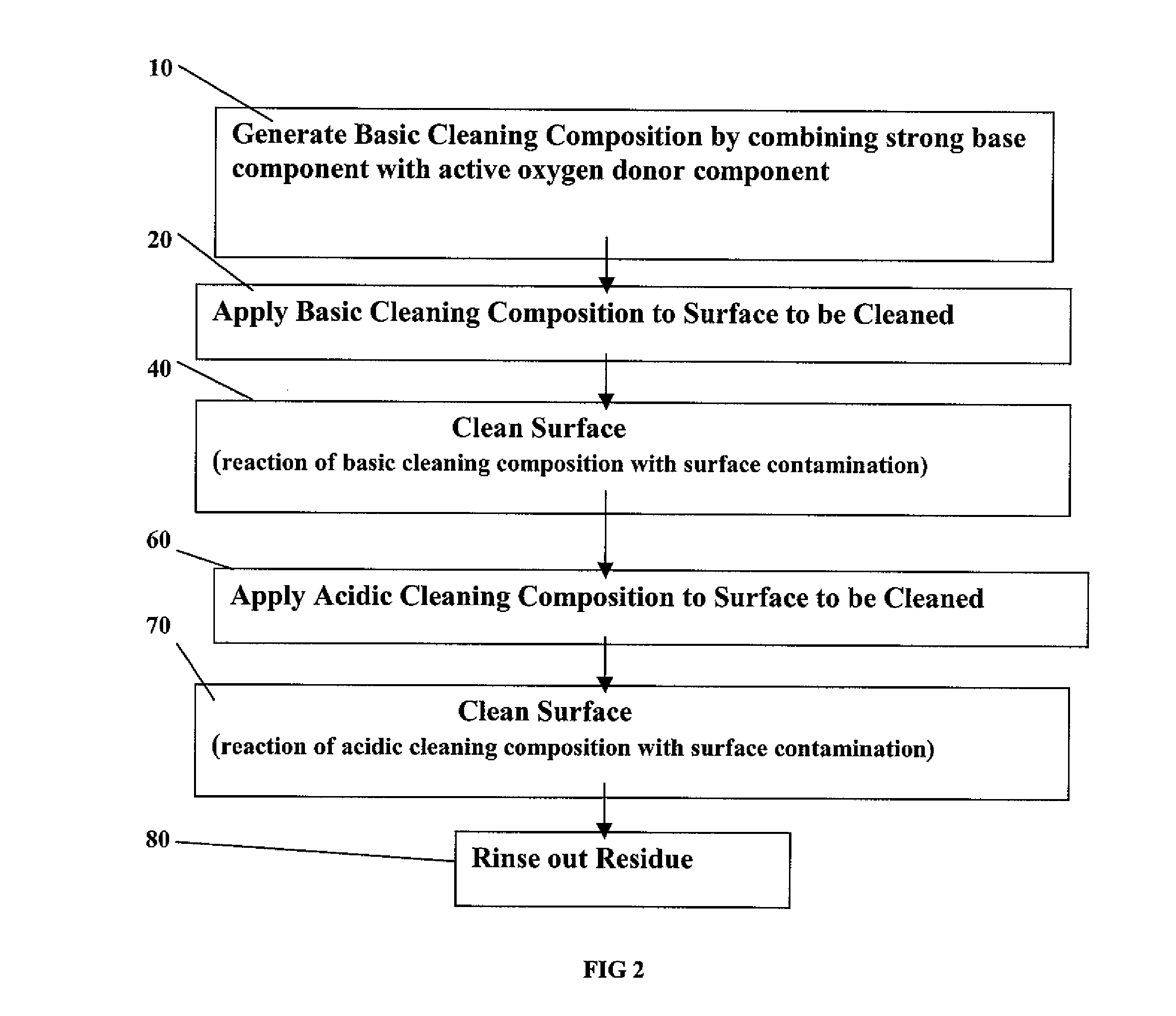Method and composition for removing contamination from surfaces in contact with water
a technology of surface contamination and composition, applied in the direction of biocide, herbicide and algicide, liquid cleaning, etc., can solve the problems of not being able to remove deposits, affecting the environment, and even requiring removal of deposits, so as to facilitate application and visible detection, improve adhesion and residence time, and simple and effective
- Summary
- Abstract
- Description
- Claims
- Application Information
AI Technical Summary
Benefits of technology
Problems solved by technology
Method used
Image
Examples
example 1
[0042]
NaOH0.1-10MSurfactant0-2% (w / w)Anti foaming agent0-2% (w / w)H2O20.1-10% (w / w)* Peracetic acid0-5% (w / w)*At NaOH concentrations of ≧5M the H2O2 concentrations have to be reduced to ≦1%.
example 2
[0043]
KOH0.1-11MSurfactant0-2% (w / w)Anti foaming agent0-2% (w / w)H2O20.1-20% (w / w)* Peracetic acid0-5% (w / w)
example 3
[0044]
NaOH / KOH combined0.1-10MSurfactant0-2 % (w / w)Anti foaming agent0-2 % (w / w)H2O20.1-10 % (w / w)* Peracetic acid0-5 % (w / w)*At NaOH concentrations of ≧5M the H2O2 concentrations have to be reduced to ≦1%.
[0045]The individual constituents of the cleaning compositions described herein are commercially available from various sources including those described in McCutcheon's Functional Materials (Vol. 2), North American Edition, 1991; and in Kirk-Othmer, Encyclopedia of Chemical Technology, 3rd Edition, Vol. 22, the contents of which are incorporated herein by reference. For any particular cleaning composition, the optional components used should be compatible with all other ingredients included in the composition.
[0046]In the application step 20, the cleaning composition in accordance with the invention is applied to the surface to be cleaned by soaking the surface in the cleaning solution for at least 30 minutes, or by spraying the cleaning solution onto the surface, preferably by ...
PUM
| Property | Measurement | Unit |
|---|---|---|
| composition | aaaaa | aaaaa |
| pressure | aaaaa | aaaaa |
| pH | aaaaa | aaaaa |
Abstract
Description
Claims
Application Information
 Login to View More
Login to View More - R&D
- Intellectual Property
- Life Sciences
- Materials
- Tech Scout
- Unparalleled Data Quality
- Higher Quality Content
- 60% Fewer Hallucinations
Browse by: Latest US Patents, China's latest patents, Technical Efficacy Thesaurus, Application Domain, Technology Topic, Popular Technical Reports.
© 2025 PatSnap. All rights reserved.Legal|Privacy policy|Modern Slavery Act Transparency Statement|Sitemap|About US| Contact US: help@patsnap.com



